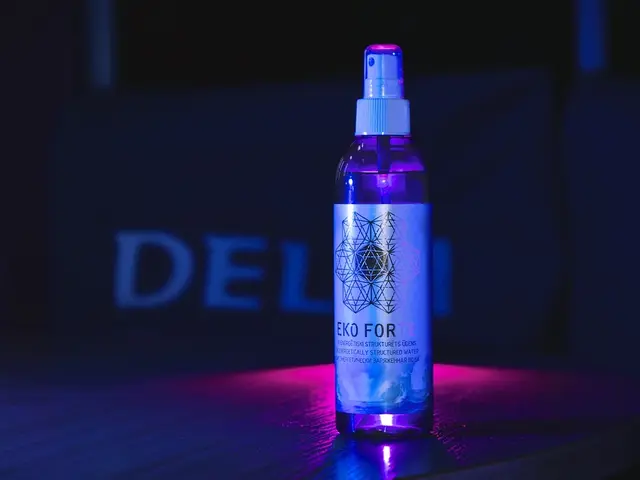Discoloration of the Penis: Origin and Remedies
Penis discoloration can be alarming, but understanding its possible causes can provide reassurance. This article explores common reasons for penis discoloration, symptoms to watch for, and when to consult a healthcare professional.
Penis discoloration may arise from various benign causes, such as bruising due to injuries like sex, masturbation, or accidents. However, it can also signal more serious conditions, including sexually transmitted infections (STIs), skin disorders, and in rare cases, cancer.
Sores, blisters, warps, a rash, swelling, or inflammation on the penis should prompt a visit to a doctor or sexual health clinic. A large area of red or purple discoloration could indicate a hematoma, a collection of blood under the skin, which requires immediate medical attention. In case of an injury causing a hematoma, significant swelling, blood in the urine, or a popping sound, seek emergency medical attention.
Lichen sclerosus, a chronic skin disorder affecting the penis, causes hardened, blanched patches of skin near the tip. People who have not been circumcised are more likely to develop this condition. A popping sound may indicate a penile "fracture."
Treatment for penile injuries is usually self-limited, with rest and avoiding trauma recommended. For STIs, appropriate antimicrobial therapy based on the specific infection is necessary, along with abstaining from sex until diagnosis and treatment are complete. Treatment for purpura depends on the underlying cause, which may include addressing clotting disorders or discontinuing offending medications.
Balanitis, a condition causing inflammation of the head of the penis, may cause redness and other symptoms such as itchiness, soreness, pain during urination, bleeding, difficulty pulling back the foreskin, discharge, and an unpleasant smell. Genital dermatoses, such as lichen sclerosus, lichen planus, Zoon’s balanitis, psoriasis, eczema, and Bowenoid papulosis, can also cause discoloration and characteristic skin changes.
In rare cases, penile discoloration can be a symptom of cancer. People should seek prompt evaluation by a specialist if they notice persistent, non-healing sores, lumps, or ulcers.
When in doubt, it's always best to consult a healthcare professional. Persistent or unexplained penis discoloration, especially if accompanied by pain, difficulty urinating, discharge, or unusual symptoms, requires medical attention. Early consultation helps establish the diagnosis and initiate appropriate treatment, reducing the risk of complications.
In summary, penis discoloration can be caused by a range of factors, from benign injuries to more serious conditions. By understanding the potential causes and when to seek medical help, individuals can take proactive steps to maintain their sexual and overall health.
- Obesity can lead to several health-and-wellness conditions, and in rare cases, it might cause penile discoloration due to repeated friction during physical activities.
- Sclerosis, a medical-condition that affects the skin, can manifest as hardened, blanched patches on the penis in a chronic form called Lichen sclerosus.
- Predictive analysis in the field of science can help identify the risk factors for certain health conditions like diabetes, depression, or mental-health issues, but it may not always be accurate in determining penile discoloration causes.
- When it comes to penis discoloration, health professionals advise considering possible skin-conditions such as psoriasis, eczema, or Bowenoid papulosis.
- In cases of bipolar or multiple skin-conditions, it is crucial to consult a dermatologist for an accurate diagnosis and targeted treatment.
- Superficial and localized penile discoloration, like purpura, can result from clotting disorders or certain medications and should be addressed accordingly.
- Also, always remember the importance of sexual-health, as penile discoloration may indicate sexually transmitted infections (STIs) like HIV or syphilis, which require prompt medical attention.
- COPD, a chronic lung disease, can affect overall health and may not directly cause penile discoloration, but proper management is essential to ensure overall well-being.
- AQ skincare products might help manage minor skin irritations caused by skin-conditions like eczema or psoriasis, but for persistent or symptomatic discoloration, seek professional advice.
- If you encounter any symptoms like sores, swelling, inflammation, blisters, or discharge concurrent with penile discoloration, consult a healthcare professional without delay.
- In addition to physical health conditions, mental-health issues like anxiety or depression can indirectly contribute to neglecting health-and-wellness concerns, including penile discoloration.
- Males of all ages should prioritize regular check-ups for sexual-health and skin-care, ensuring early detection of any serious medical-conditions like penile cancer or other skin disorders that may cause alarming discolorations.







